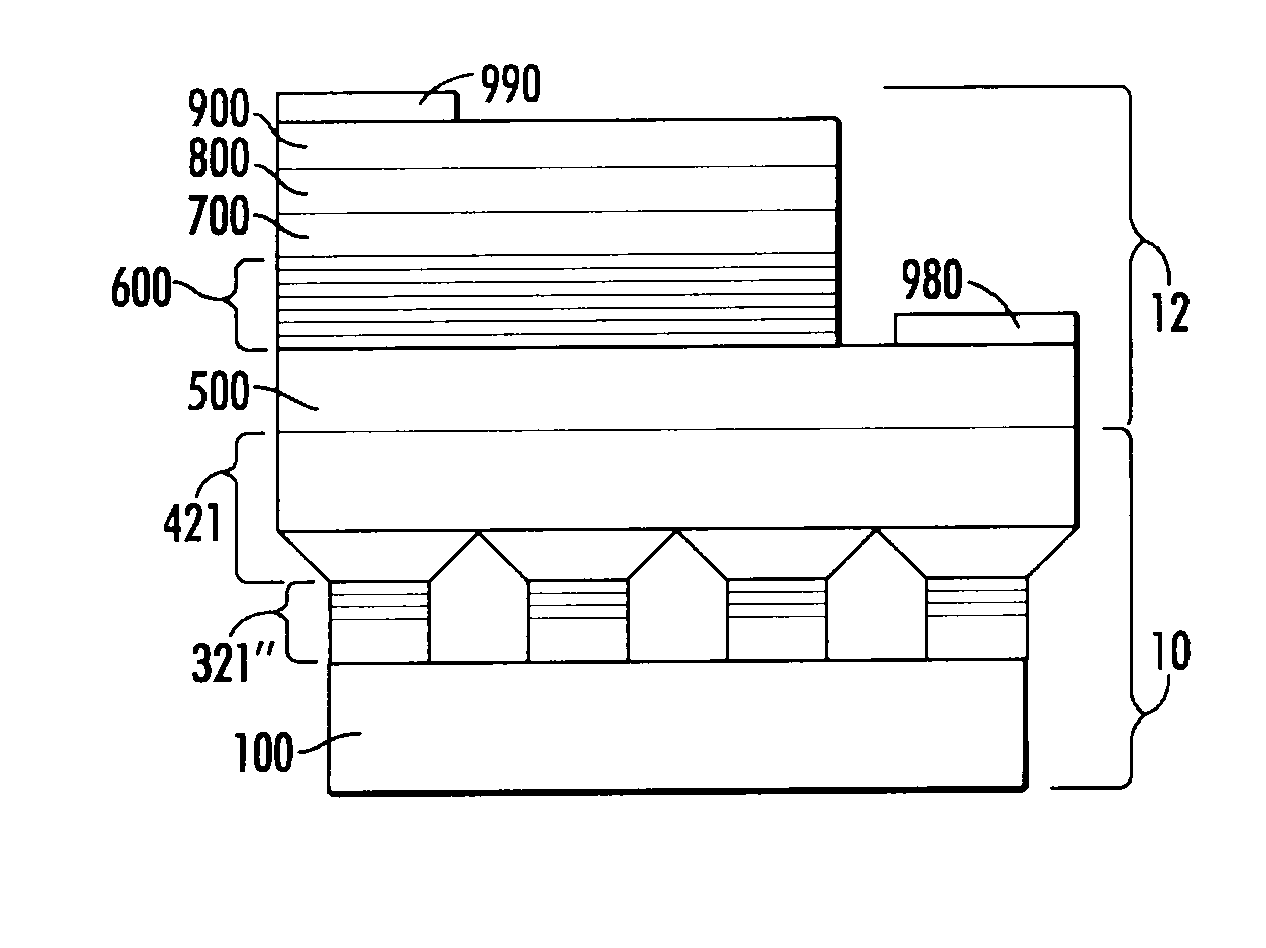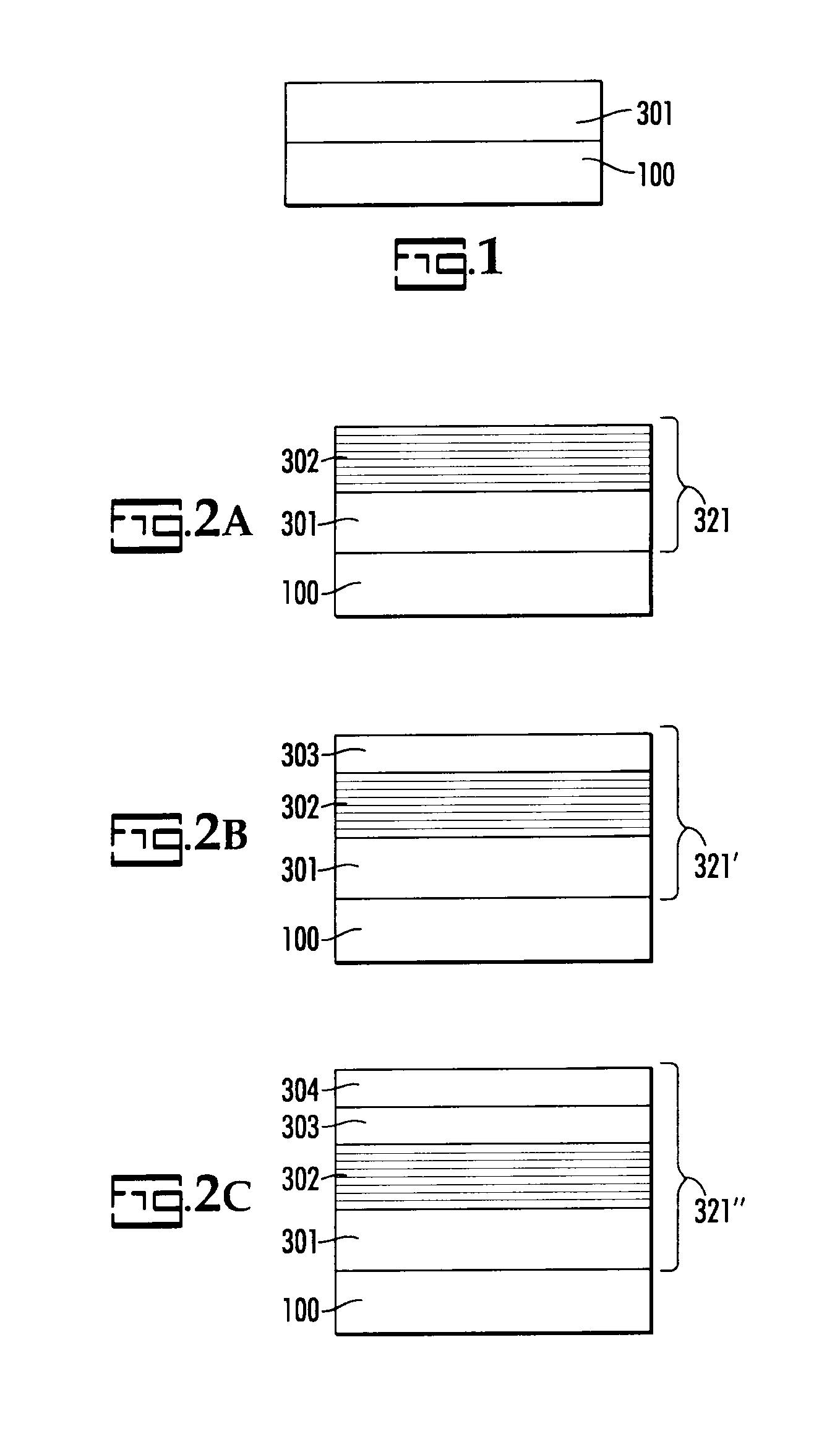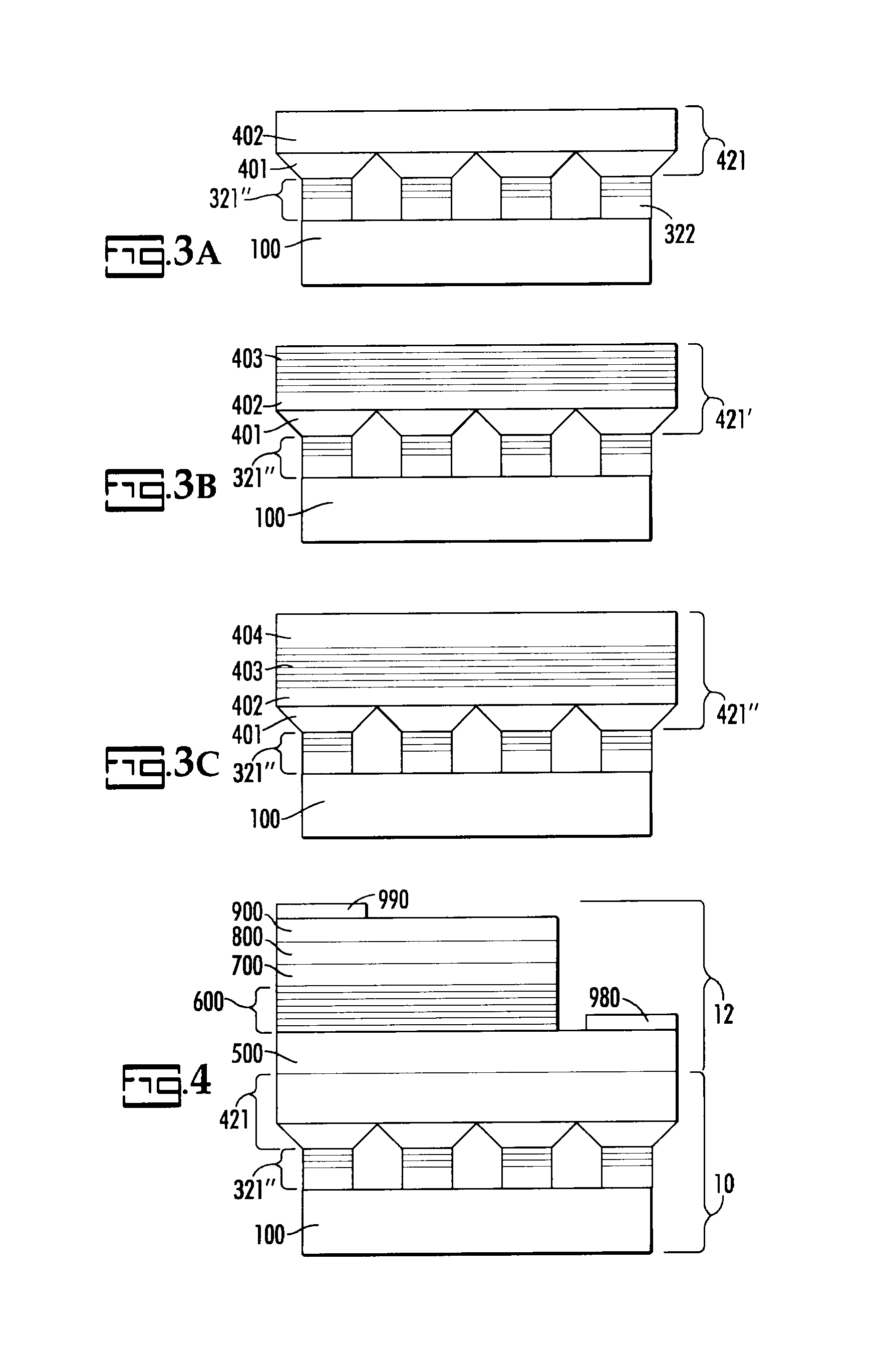Non-polar ultraviolet light emitting device and method for fabricating same
a technology of non-polar ultraviolet light and light emitting device, which is applied in the manufacture of semiconductor/solid-state devices, semiconductor devices, electrical devices, etc., can solve the problems of difficult manufacturing of ultraviolet emitting leds, formation of crystalline defects, and lattice and thermal mismatch between defects, etc., to achieve the effect of improving ultraviolet emitting leds
- Summary
- Abstract
- Description
- Claims
- Application Information
AI Technical Summary
Benefits of technology
Problems solved by technology
Method used
Image
Examples
Embodiment Construction
[0034]The present invention is an ultraviolet light-emitting device (LED) and a method for making an LED, particularly one that emits ultraviolet, and more preferably deep ultraviolet light. In particular, it is a template 10 that serves as a platform for an ultraviolet light-emitting structure 12 as shown in FIG. 4. Briefly, template 10 includes a non c-plane substrate. More preferably the substrate includes an m-plane {1-100} buffer layer, an a-plane {11-20} buffer layer, a {1014} semi polar buffer layer, a {1122} semi polar buffer layer, a {1011} semi polar buffer layer, a {1013} semi polar buffer layer, a {1012} semi polar buffer layer, and a {2021} semi polar buffer layer of a substrate with the m-plane and a-plane being more preferable and the m-plane being most preferable. The substrate is preferably selected from the group consisting of aluminum nitride, gallium nitride, aluminum gallium nitride, aluminum indium gallium nitride, aluminum indium nitride, SiC, sapphire and lit...
PUM
 Login to View More
Login to View More Abstract
Description
Claims
Application Information
 Login to View More
Login to View More - R&D
- Intellectual Property
- Life Sciences
- Materials
- Tech Scout
- Unparalleled Data Quality
- Higher Quality Content
- 60% Fewer Hallucinations
Browse by: Latest US Patents, China's latest patents, Technical Efficacy Thesaurus, Application Domain, Technology Topic, Popular Technical Reports.
© 2025 PatSnap. All rights reserved.Legal|Privacy policy|Modern Slavery Act Transparency Statement|Sitemap|About US| Contact US: help@patsnap.com



